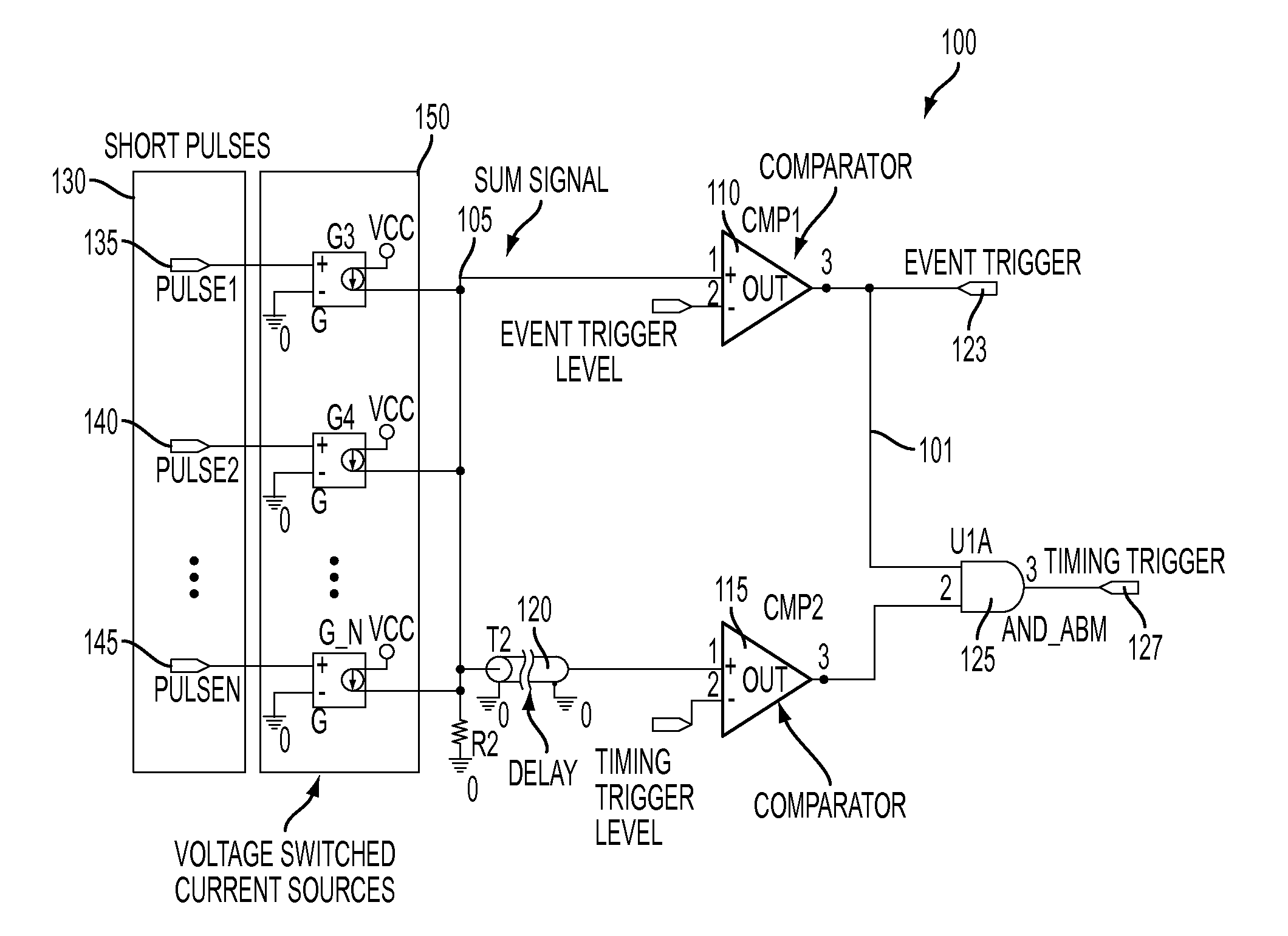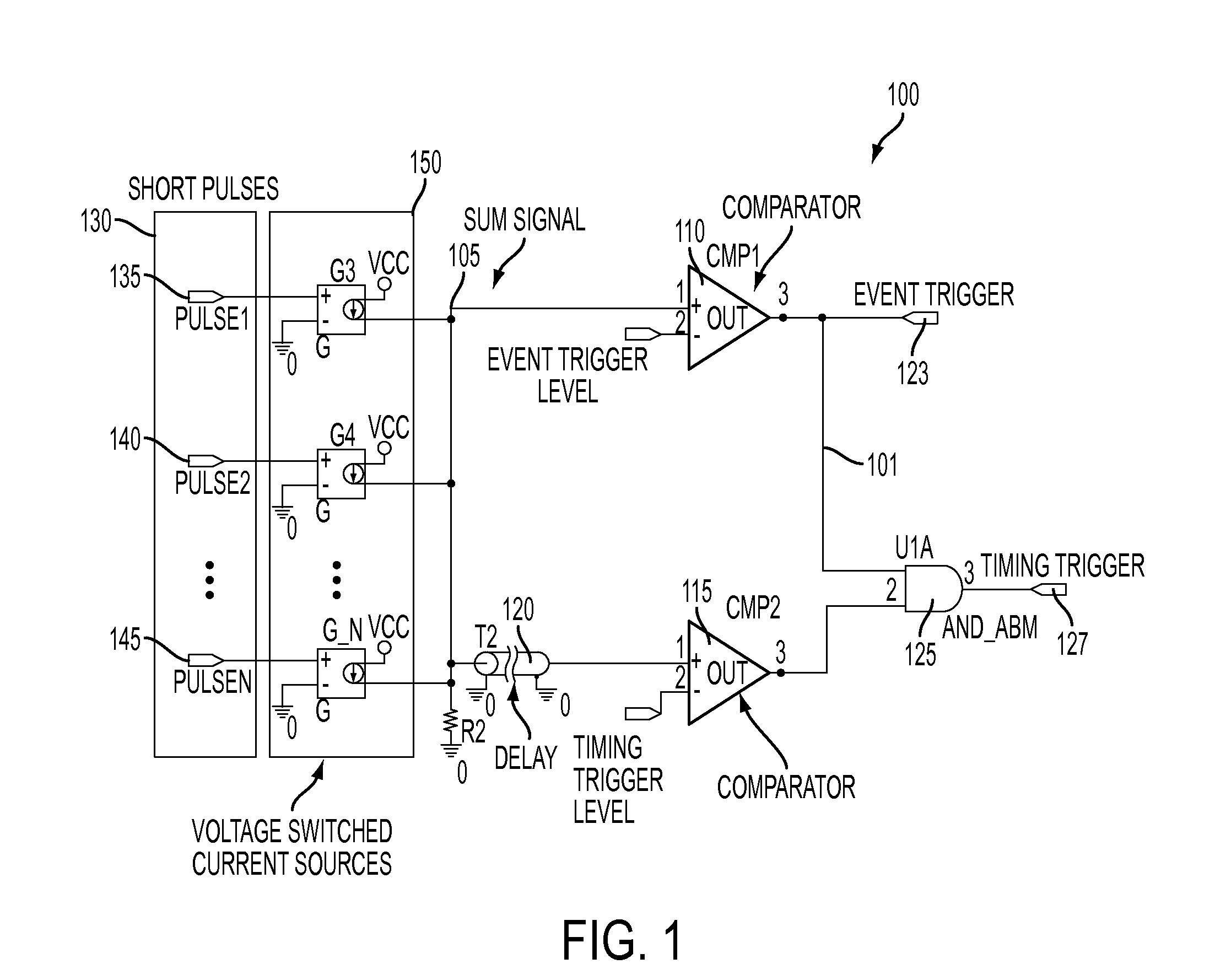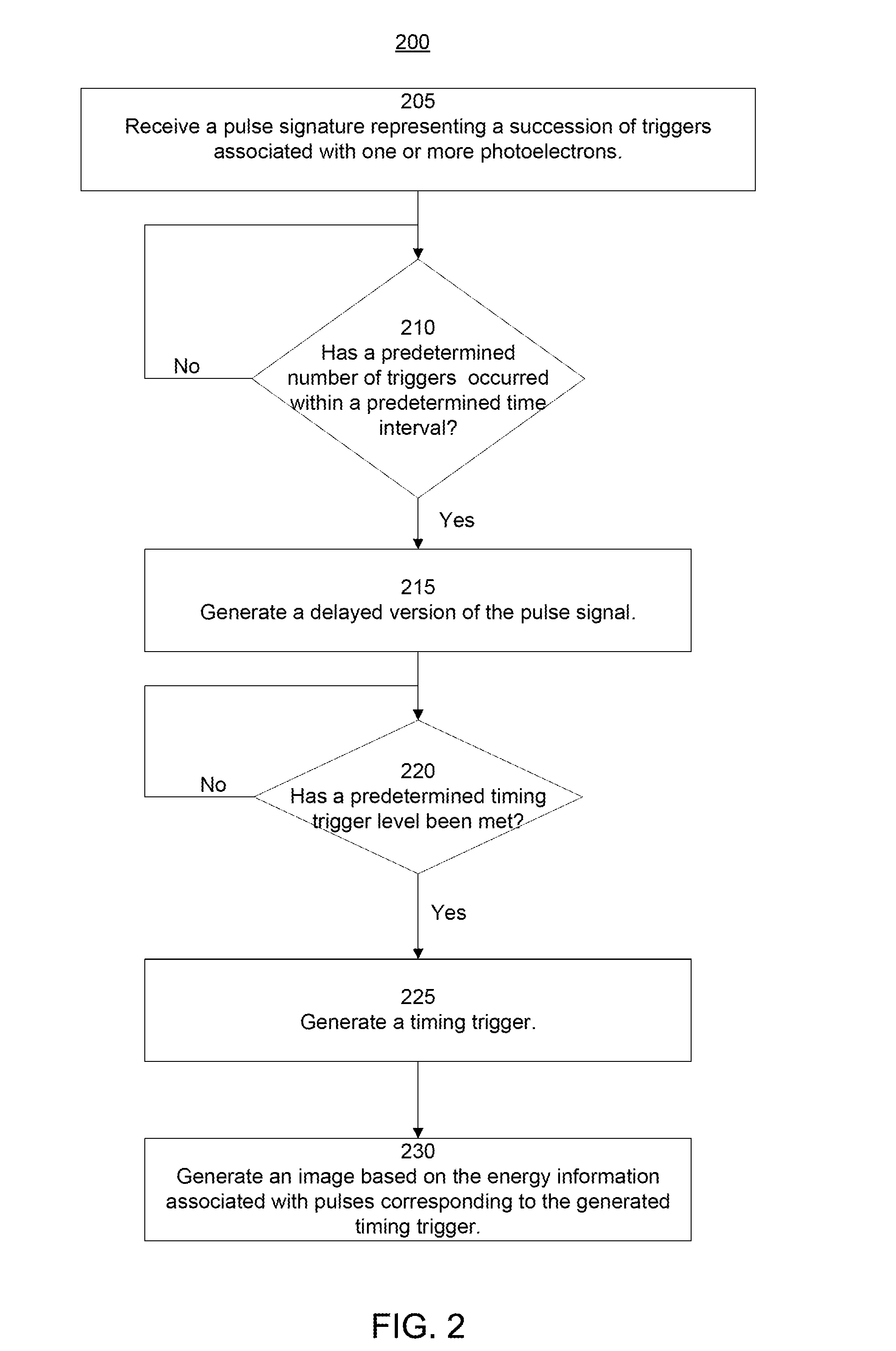System and Method of Determining Timing Triggers for Detecting Gamma Events for Nuclear Imaging
a technology of timing triggers and nuclear imaging, applied in the field of nuclear medical imaging systems, can solve the problems of detector dead time, false triggers, detector limits, etc., and achieve the effect of reducing detector dead tim
- Summary
- Abstract
- Description
- Claims
- Application Information
AI Technical Summary
Benefits of technology
Problems solved by technology
Method used
Image
Examples
Embodiment Construction
[0018]As required, disclosures herein provide detailed embodiments of the present disclosure; however, the disclosed embodiments are merely examples of the disclosure that may be embodied in various and alternative forms. Therefore, there is no intent that specific structural and functional details should be limiting, but rather the intention is that they provide a basis for the claims and as a representative basis for teaching one skilled in the art to variously employ the present disclosure.
[0019]As discussed above, conventional methods for determining timing trigger resolutions of gamma events of detectors such as SiPMs suffer from dark events such as false gamma events due to noise and dark pulses. Conventional methods of determining timing resolutions further suffer from dead time that is needed for a detector to verify that the detected gamma event is a true gamma event or that is needed for the detector to be ready to acquire data corresponding to the next gamma event. The pr...
PUM
 Login to View More
Login to View More Abstract
Description
Claims
Application Information
 Login to View More
Login to View More - R&D
- Intellectual Property
- Life Sciences
- Materials
- Tech Scout
- Unparalleled Data Quality
- Higher Quality Content
- 60% Fewer Hallucinations
Browse by: Latest US Patents, China's latest patents, Technical Efficacy Thesaurus, Application Domain, Technology Topic, Popular Technical Reports.
© 2025 PatSnap. All rights reserved.Legal|Privacy policy|Modern Slavery Act Transparency Statement|Sitemap|About US| Contact US: help@patsnap.com



